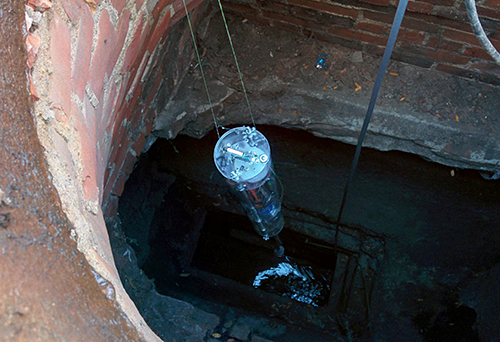Recommended

The answer to preventing the spread of illnesses, tackling drug-use, and monitoring a city’s health could be just below our city streets in sewers. Analysis of underground wastewater provides a surplus of biological information and can tell us an astounding amount about the health of a community. This insight is the motivation behind Underworlds, a cross-disciplinary, open-data platform project. The collaboration started with professors Carlo Ratti, director of the Senseable City Lab, and Eric Alm, director of the Center for Microbiome Informatics and Therapeutics and now also involves civil and environmental engineering and the Computer Science and Artificial Intelligence Laboratory.

“It is a well-known fact that you can tell a lot about a person by sampling their microbiome; presence of illness, certain genetic tendencies, and overall health,” explained Ratti and Alm. “As this information is flushed down the toilet, it lives on in our sewage. The Underworlds platform is designed to detect and characterize viruses, bacteria, and chemicals in a city’s sewage.”
Collecting data from wastewater, as one would presume, is a dirty job—so they came up with a high-tech solution: a robot. “We knew we wanted to create a device that would automate sample collection and make it easier,” explained Ratti and Alm. “Researchers would engage in a lengthy process filtering and preparing the samples for DNA extraction and sequencing. We knew immediately that there must be an easier way to do this and we began designing an instrument that could automate and on-board this process.”
The tube-shaped prototype, Luigi (think Mario Bros.), has the ability to enter a sewer system and take samples from targeted areas, guided remotely via an iPhone app. Once collected, the samples are taken to the lab and analyzed to report hundreds of thousands of bacteria, viruses, and more.
The focus of the pilot, which started in Cambridge in 2015, is on the detection and analysis of viruses and diseases. With the ability to monitor patterns in bacteria and illnesses, this could mean early detection of things like a new flu strain or even epidemics, which would cut medical costs and eventually even allow for prevention. The benefits of the platform go beyond disease data—studying a city’s microbiome through sewage-water analysis can reveal patterns in diets, drug use, obesity, or even help detect things like antibiotic resistance.
“With this method of instream sampling, we’ve been able to identify common pharmaceuticals such as Advil and Tylenol, and chemicals such as nicotine,” says Ratti. “We’ve also identified the top 10 plant-based foods consumed by people. The next critical step in this process is to use DNA sequencing to estimate the number of different people contributing to each sample so that we can develop aggregate statistics about public health.”
Ratti says that targeting specific areas of the city to study and gathering data on those areas can help give us a picture of particular neighborhoods and eventually, the greater health of our cities.
The project was awarded a $4 million grant by the Kuwait Foundation for the Advancement of Sciences through the Signature Research Program of the Kuwait MIT Center for Natural Resources and the Environment (CNRE) to support work over three years in collaboration with Kuwait Institute for Scientific Research and Kuwait University.







